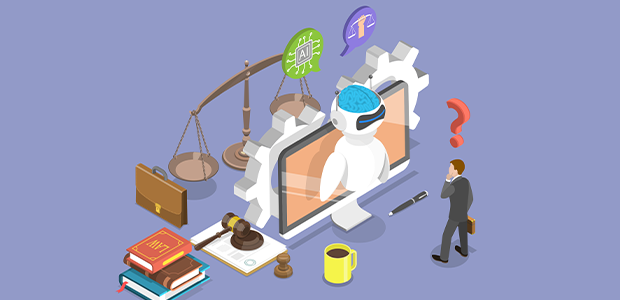
The EU AI Act – what, why, and how
There’s been a huge amount shared about the EU AI Act in recent weeks, so much so that you’d be forgiven for being pretty confused as to what is happening and when, and whether you need to worry about it at all.
So, let’s break it down into the what, the why, and the how of the EU AI Act.
The what
The EU AI Act is the EU’s legal framework for regulating AI. The aim of the Act is to set a global standard of AI regulation that ensures AI is safe and trustworthy. The Act categorises AI systems by risk level: unacceptable risk, high risk, limited risk, and minimal risk, and establishes different rules for AI providers and users depending on the level of risk.
But don’t be fooled; regardless of whether you’re in the EU or not, you still need to be aware of the Act and its implications. Given the global nature of technology, the scope of the Act is wide-reaching; any AI model used in the EU – regardless of where it originates from – is covered. So, if you are an AI provider that has customers or partners in the EU, or if you are a user of AI and have colleagues, partners, teams or stakeholders in the EU, it’s imperative that you’re up to speed. Not least because the Act’s fine scale has penalties of up to €35 million or 7% of a company’s global turnover, whichever is higher.
It's also worth noting that the EU AI Act is not the only AI legislation in development. The US approach is far more patchwork – combining existing laws, new initiatives and non-binding principles such as the ‘Blueprint for an AI Bill of Rights’, while in the UK, an AI Bill is still in the early stages.
The when
There is much discourse over what the Act will cover and when it will come into force, and there are currently rumours of a delay in the implementation of the next phase. As it stands, the timeline looks like this:
- The Act came into force in August 2024, but becomes fully applicable two years later – so August 2026 is the key date to be mindful of
- The ban on AI systems posing unacceptable risks is already in force, and applied from 2nd February 2025
- The governance rules and the obligations for General Purpose AI (GPAI) models became applicable on 2 August 2025
- The rules for high-risk AI systems – embedded into regulated products - have an extended transition period until 2 August 2027
The why
In my opinion, any delays to this timeline would be a grave mistake, because we are already playing catch-up, trying to regulate for something that has been in development for decades. Put simply, we can’t afford to lose any more time.
There are dozens of examples of where AI has ‘gone rogue’ from applying bias, to fabricating evidence and inventing policies. The consequences of this can be catastrophic, resulting not only in significant financial loss but also stress and emotional impact on individuals and even loss of life. There are many examples of this, such as Uber’s self-driving car that killed a pedestrian after misclassifying them as an unknown object, and a faulty trading algorithm which lost the firm Knight Capital $440 million after triggering unintended trades. As a result, it’s too dangerous to leave AI unregulated.
While the argument goes that regulation, including the EU AI Act, will stifle innovation, proponents of this view are missing the point. Modern AI systems increasingly self-optimise and adapt beyond their initial training parameters, often without adequate human oversight. If we allow this to continue unchecked, with all the dangerous consequences that come with this approach, AI will be too risky to develop. Innovation will be stopped in its tracks because those risks will outweigh any benefits.
Legislation, like the EU AI Act, is needed to ensure that AI is properly governed, that it is used ethically and responsibly, and that those who don’t comply with the rules are properly sanctioned. By ensuring our knowledge of responsible AI usage and compliance with regulation, we can collectively protect the freedom to innovate and realise the full potential of this incredible technology.
For more startup news, check out the other articles on the website, and subscribe to the magazine for free. Listen to The Cereal Entrepreneur podcast for more interviews with entrepreneurs and big-hitters in the startup ecosystem.

